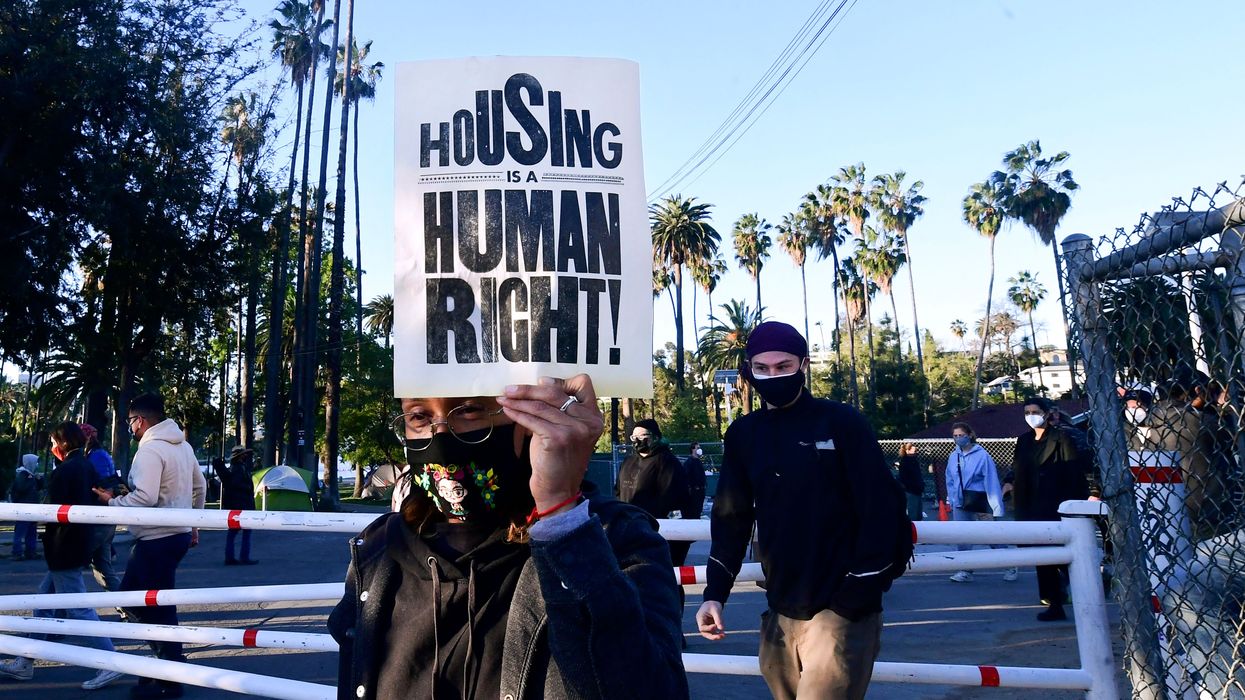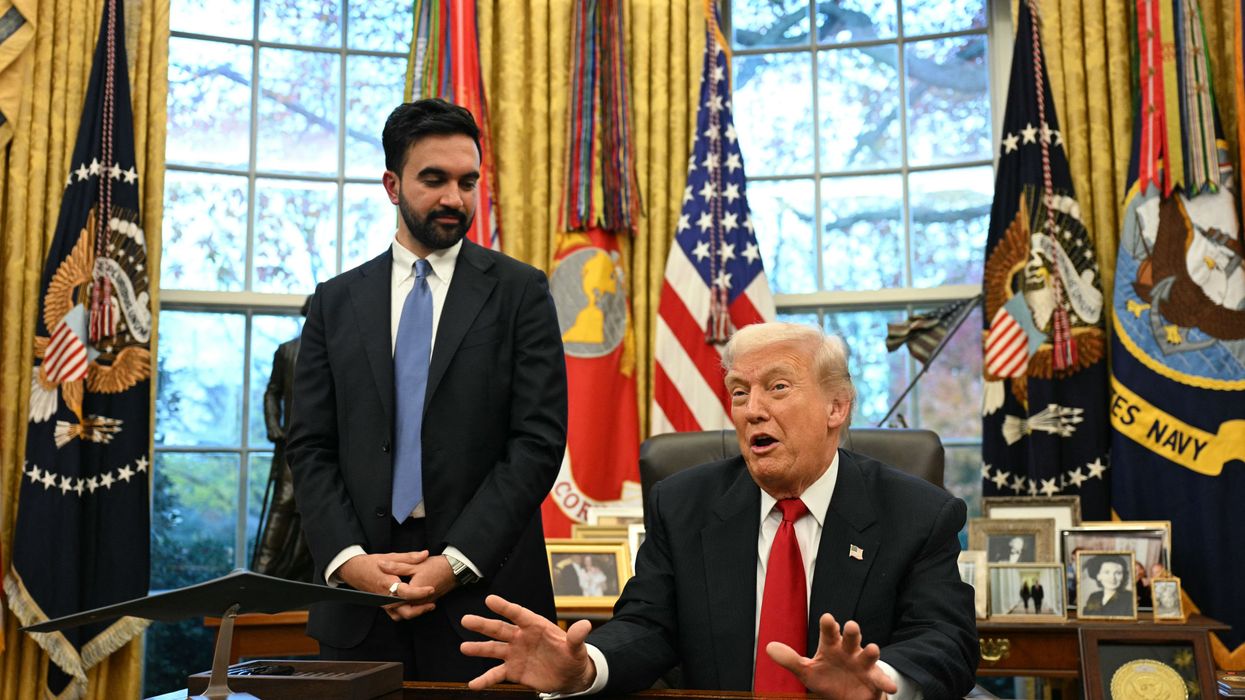The Republican Policy of Making More People Homeless
More people than ever are being forced into homelessness or are spending more than half their income on rent.
As Congress continues to negotiate the next set of funding bills before the upcoming deadline at the end of January, policymakers must ensure sufficient and timely funding for critical housing and homelessness programs. These programs help millions of people afford housing, a basic need. But proposed cuts could leave more than 600,000 people struggling to pay the rent — a sizable share of whom would then be at high risk of eviction and homelessness (see table here for details by state). Congress should instead use a final 2026 funding bill to keep people in their homes and support communities’ efforts to make housing more affordable for everyone.
The Administration and congressional Republicans already made deep cuts to health coverage and food assistance in their megabill enacted earlier this year. They could impose similarly harmful cuts to housing and homelessness assistance through the appropriations bill now under negotiation. It’s critical that no families lose assistance and communities have the resources to at least maintain current levels of assistance.
To make that happen, a final funding bill for the Department of Housing and Urban Development (HUD) should:
- Help more than 170,000 formerly homeless people stay in their homes with access to services. HUD issued a funding notice for the Continuum of Care (CoC) program, the main homelessness solutions program, that would cap the percentage of funding that can be used to pair rental assistance with supportive services at 30 percent — compared to about 87 percent under current policy. That change alone would take housing assistance away from more than 170,000 formerly homeless people, HUD estimates.While HUD temporarily rescinded the notice, the department stated it will make “technical corrections” and reissue it. The funding notice includes other policy changes for the funding competition that are so drastically different from previous years that some communities could be left without any CoC funding in 2026 to connect unhoused people with housing.But the timing of the notice alone will cause chaos. Some communities are facing delays in their 2026 funding because HUD issued the new funding notice months later than the usual grantmaking timeline. CoC-funded projects are on a variety of funding timelines, so projects that are expecting money in January will receive nothing. The longer HUD takes to reissue a notice and complete the grantmaking process, the longer and more extensive the gaps in funding for housing and services for formerly and currently homeless people. Many communities do not have resources to fund these services in the interim, forcing them to scale back or end housing assistance and services, which will leave many people experiencing homelessness once again.Congress needs to ensure that communities have the funding they need. Congress can — and should — direct HUD in the final funding bill to renew existing grants for 2026 (which would complete the two-year grants that first provided funding in 2025). This would keep people stably housed, and prevent funding disruptions for communities across the country, all without any increase in funding.
- Maintain assistance for the more than 50,000 households that use the successful Emergency Housing Voucher (EHV) program to pay the rent each month. The EHV program has provided life-saving assistance to households at risk of or experiencing homelessness or fleeing domestic violence and trafficking, but its funding is expected to run out in 2026. While both the House and Senate include some helpful language in their HUD funding bills, neither proposal would fully address the funding cliff. A final bill should provide additional funding to ensure these households don’t lose assistance and the stability they’ve achieved.
- Sufficiently fund the Housing Choice Voucher program, the country’s largest federal rental assistance program. Neither the House or Senate annual funding bills for HUD include enough funding to keep pace with inflation and maintain existing levels of assistance in the voucher program. Without adequate funding, many agencies would have to stop issuing vouchers to new families as a way to control costs, leading to fewer people getting the help they need. This has already happened to many agencies this year, so HUD and housing agencies have nearly depleted existing emergency resources.We estimate that, under the House bill, about 411,000 fewer people could receive assistance, and about 243,000 fewer people would receive assistance under the Senate bill. Housing Choice Vouchers are a critical tool for helping people with low incomes afford housing, including people experiencing homelessness. It’s particularly important to ensure the voucher program has robust funding given the other threats to assistance discussed above.
Taken together, these cuts would further limit who receives housing assistance, leaving up to 600,000 more people without an affordable, stable home in the coming year. Rental assistance is a critical, evidence-based solution to reducing and preventing homelessness, but already eligible households can’t access it due to chronic underfunding. More people than ever are being forced into homelessness or are spending more than half their income on rent. Taking the steps outlined above could keep these problems from getting worse.
Cuts to rental assistance, on the other hand, will leave more people waiting for help, especially because the deep cuts to Medicaid and SNAP in the Republican megabill passed in July will make housing even less affordable for millions of families. Both of these programs support housing stability by covering other basic expenses, allowing families more room in their budgets for rent. Moreover, access to health supports is a critical component of the highly effective strategies that pair rental assistance with personalized health and social services to help unhoused or formerly unhoused people — the very supports the Administration is also attempting to drastically scale back.
More people than ever are being forced into homelessness or are spending more than half their income on rent.A final funding bill for 2026 must also protect against further partisan use of rescission authority and illegal withholding of funds by including language that ensures appropriated funding reaches the communities Congress intends, and that agencies have sufficient staff to manage these programs. Such guardrails along with the provisions described above would immediately benefit people across the country and are a necessary step for making housing and other basic needs more affordable.
Looking forward, Congress should do more to address housing affordability and homelessness. Housing costs are typically the single biggest part of a household’s budget, especially for people with low and moderate incomes. With record numbers of people being forced into homelessness and more than 24 million renters spending more than half of their incomes on rent, expanding rental assistance, in addition to increasing supportive services and the supply of affordable housing, are needed to make progress.


